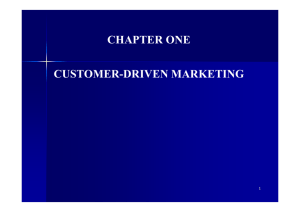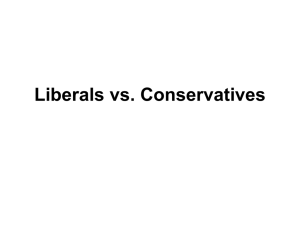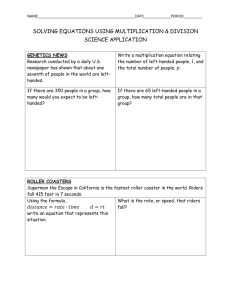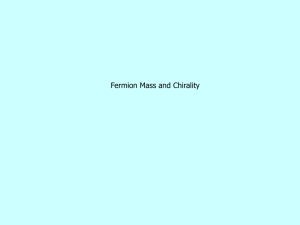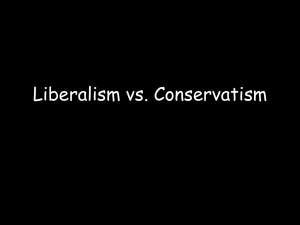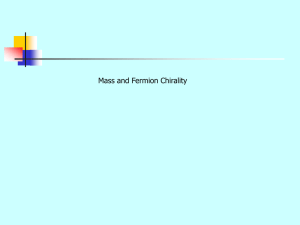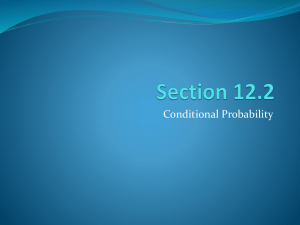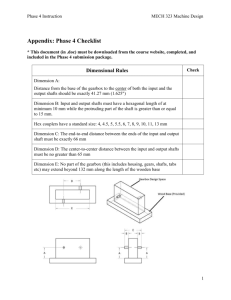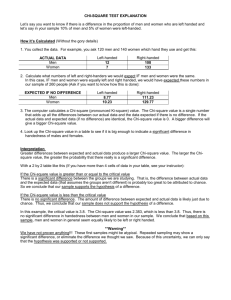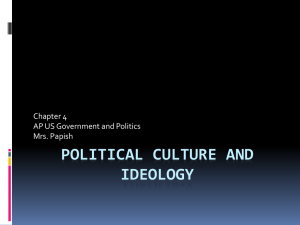Solutions of Pre
advertisement
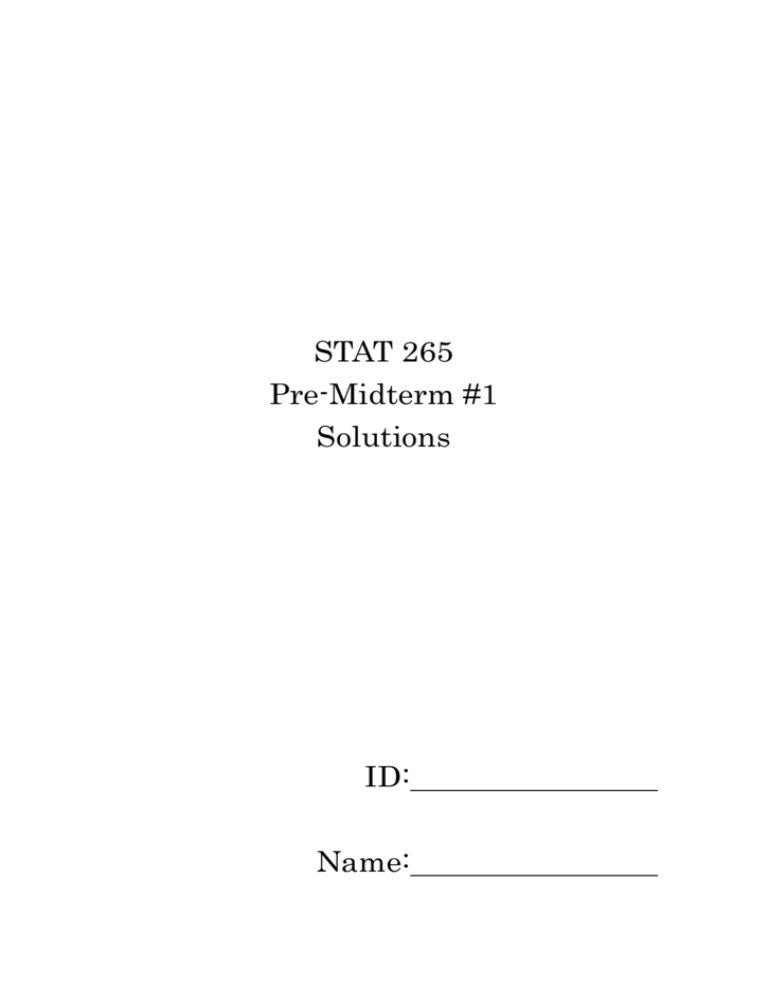
STAT 265 Pre-Midterm #1 Solutions ID: Name: 1. Hydraulic landing assemblies coming from an aircraft rework facility are each inspected for defects. Historical records indicate that 18% have defects in shafts only, 16% have defects in bushings only, and 20% have defects in either or both of them. One of the hydraulic assemblies is selected randomly. What is the probability that the assembly has a. Both defect b. Shafts defect but not bushings a) Let A=shafts, B=bushings. P(A)=0.18, P(B)=0.16, P(A⋃B)=0.2. The addition law: P(A⋃B)=P(A)+P(B)-P(A⋂B) P(A⋂B)= P(A)+P(B)-P(A⋃B)=0.18+0.16-0.2=0.14 b) P(Ac ⋂B) =P(A)- P(A⋂B)=0.18-0.14=0.04 2. One research shows the distribution of handedness, 88% of people right-handed and 12% left-handed. Suppose the handedness of married couples is independent and each partner of a couple follows this distribution. a. What is the probability that one partner is right-handed and the other is left-handed? b. What is the probability that at least one of a couple is left-handed? a) Let R=right-handed, L=left-handed, H=husband, W=wife P(R⋂H)=P(R⋂W)=0.88. P(L⋂H)=P(L⋂W)=0.12 P(((R⋂H)⋂(L⋂W))⋃((L⋂H)⋂(R⋂W)))=P((R⋂H)⋂(L⋂W))+P((L⋂H)⋂(R⋂W)) = P(R⋂H)P(L⋂W)+P(L⋂H)P(R⋂W) =(0.88)(0.12)+(0.12)(0.88)=0.2112 b) P(at least one of a couple left-handed) =1-P(both right-handed) =1-P((R⋂H)⋂(R⋂W)) =1-P(R⋂H)P(R⋂W) =1-(0.88)(0.88)=0.2256 3. Consider the following electric circuit. Current will flow from point a to point b if there is at least one closed path when the relays are activated. Suppose the relays act independently of one another and close properly with a probability of 0.9. What is the probability that the current flows? Let R1=the relay in left of the upper path works, R2= the relay in right of the upper path works, R3=the relay in the lower path works. P(R1)=P(R2)=P(R3)=0.9 The probability the current flows in the upper path is P(R1⋂R2)=P(R1)P(R2)=(0.9)(0.9)=0.81 The probability the current flows in the lower path is P(R3)=0.9 By the general additional rule, P((R1⋂R2)⋃R3)=P(R1⋂R2)+P(R3)-P((R1⋂R2)⋂R3) =(0.81)+(0.9)-P(R1⋂R2)P(R3) =(0.81)+(0.9)-(0.81)(0.9)=0.981 4. The manager of a stockroom in a factory has constructed the following probability distribution for the daily demand (number of times used) for a particular tool. y 0 1 2 P(y) 0.1 0.5 0.4 If costs the factory $10 each time the tool is used, plus $5 per day. Find the mean and variance of the daily cost for use of the tool E(Y)=0(0.1)+1(0.5)+2(0.4)=1.3 E(Y2 )=02 (0.1)+12 (0.5)+22 (0.4)=2.1 Let C be the daily cost. Then C=10Y+5. E(C)=E(10Y+5)=10E(Y)+5=10(1.3)+5=18 V(C)=V(10Y+5)=102 V(Y)=100(E(Y2 )-(E(Y))2 )=100(2.1-1.32 )=41 5. A multiple-choice examination has 15 questions, each with five possible answers, only one of which is correct. Suppose one student has no idea on the exam and guesses all questions independently. a. What is the expected number of questions which this student answers correctly for the first time? b. What is the probability that 10 questions are correctly answered? a) For the Nth question, this student answers correctly first time. Then, N has a geometric distribution with p=1/5=0.2. E(N)=1/p=1/0.2=5 b) Let Y be the number of questions answered correctly. Then, Y had a binomial distribution with p=0.2 P(Y=10)=(15)(0.2)10 (1-0.2)5 =0.00010076 10 6. One tennis player has 10 tennis rackets. From her past experience, the 50% of rackets do not have her favorite string tension. Suppose she selects 3 rackets from these 10 rackets for a match. Let Y denote the number of selected rackets whose string tension does not fit her. For example, if Y=1, 1 racket does not work in a match. a. What is the expected number of rackets which do to fit in total? b. Suppose 5 rackets do to fit. Find the probability mass function of Y c. Find the probability that exactly 2 rackets do not fit in a match. a) For each racket, it fits or not. This indicates Binomial. Np=10x0.5=5 b) Y has a hypergeometric probability distribution with N=10, r=5, n=3 5 5 ( )( ) 𝑦 3−𝑦 𝑃(𝑌 = 𝑦) = , 𝑦 = 0,1,2,3 10 ( ) 3 (5)(5) 2 1 =5/12=0.4167 (10) 3 c) P(Y=2)= 7. A population of voters in a certain country contains 20% Liberals, 35% Conservatives, and 45% others. The probabilities of favor on a restricted trading issue are 1% from Liberals, 6% from Conservatives, and 3% from others. a. What is the probability that a randomly selected voter favors on this issue? b. If a voter favors on this issue, what is the probability that he/she is from Conservatives? a) Let F=favor on this issue, L=Liberals, C=Conservatives, O=others. P(F)=P(F⋂L)+P(F⋂C)+P(F⋂O) =P(F|L)P(L)+P(F|C)P(C)+P(F|O)P(O) =(0.01)(0.2)+(0.06)(0.35)+(0.03)(0.45) =0.0365 b) P(C|F)=P(F⋂C)/P(F)=(0.06)(0.35)/(0.0365)=0.57534

